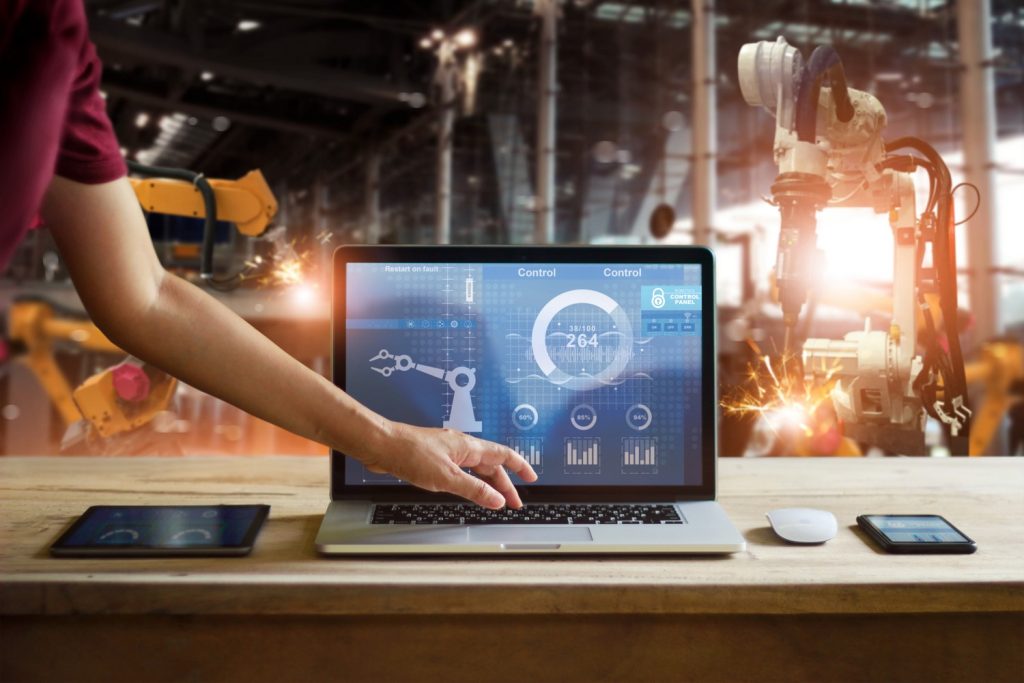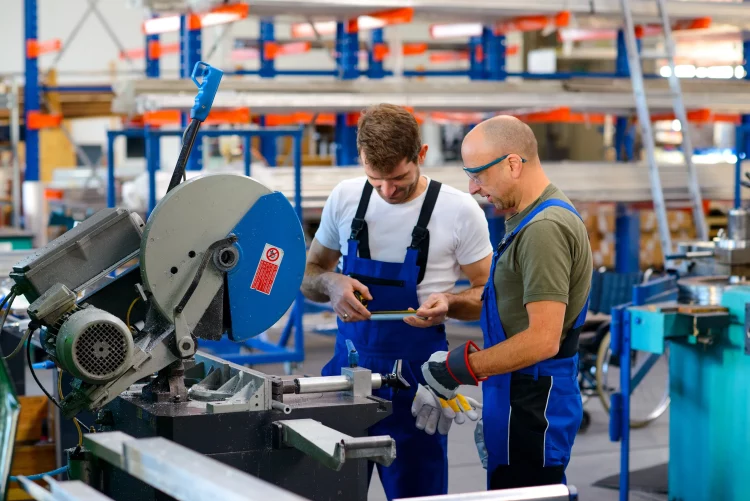1. Introduction: The Rise of Autonomous Robotics
The dawn of autonomous robotics technology marks a new era in which robots are no longer confined to repetitive tasks in factories but are expanding their reach across various sectors. From manufacturing to healthcare, agriculture, and even education, autonomous robots are now capable of performing complex tasks without the need for direct human control. This shift has profound implications for the global labor market and is likely to redefine the nature of work in the coming decades.
While the promise of increased efficiency, precision, and productivity is exciting, the automation revolution also brings about difficult questions regarding job displacement, economic inequality, and worker retraining. In this article, we will explore the complexities of these challenges, while also discussing the opportunities for innovation and growth that autonomous robotics technology brings to the workforce.
2. The Technological Drivers Behind Autonomous Robotics
2.1 Advancements in Artificial Intelligence (AI) and Machine Learning
Autonomous robots are powered by advanced AI algorithms that enable them to perceive, interpret, and react to their environment without human intervention. Machine learning plays a critical role in helping robots adapt to new situations by continuously improving their performance based on experience. With developments in neural networks, deep learning, and computer vision, robots can now navigate complex environments, make decisions, and even learn from their mistakes. This has led to the deployment of robots in sectors that were previously reliant on human expertise.
2.2 Sensing and Perception Technologies
For autonomous robots to function effectively in real-world environments, they require a range of sensor technologies, such as LiDAR, radar, and cameras, to detect obstacles, understand spatial relations, and monitor conditions in real-time. These sensors allow robots to interact with their surroundings in ways that were once reserved for humans, enabling them to perform tasks with greater flexibility and accuracy.
2.3 Robotics and Automation Platforms
The increasing sophistication of robotic platforms, including mobile robots, collaborative robots (cobots), and drones, has expanded the scope of automation across industries. Cobots, in particular, are designed to work alongside human workers, performing tasks like assembly, quality inspection, and material handling. As these robots become more versatile and cost-effective, they are increasingly seen as key contributors to productivity in industries such as automotive manufacturing, warehousing, and logistics.
3. The Challenges Posed by Autonomous Robotics on the Labor Market
3.1 Job Displacement and Skill Gaps
One of the most discussed consequences of widespread automation is the potential for job displacement. Robots and AI are increasingly capable of performing tasks traditionally carried out by humans, particularly in low-skill, manual labor roles. For example, in the manufacturing sector, robots can handle tasks such as assembly, welding, and painting more efficiently than human workers. As a result, jobs in these industries are at high risk of being automated, leading to potential unemployment for millions of workers globally.
Moreover, even in high-skill professions such as data analysis or medical diagnosis, AI and machine learning are beginning to perform specialized tasks that once required human expertise. This creates a scenario where skills gaps emerge, with workers needing to rapidly upskill to stay relevant in the labor market.
3.2 Economic Inequality and Workforce Polarization
The rise of autonomous robotics could exacerbate economic inequality, particularly between high-skill and low-skill workers. High-skill jobs in fields like robotics engineering, AI development, and software programming are likely to flourish, while low-skill jobs, such as those in retail, construction, and transportation, face a greater risk of being replaced by automation. This disparity could create a polarized workforce, where well-educated, high-income individuals thrive, while low-income workers face unemployment or underemployment.
The geographic divide is another factor to consider. Countries and regions that are early adopters of automation and robotics may experience economic growth and job creation, while others that lag behind in these technologies could see a widening gap in prosperity.
3.3 Ethical Concerns and Technological Dependency
As robots take on more roles traditionally held by humans, questions arise about the ethical implications of widespread automation. Ethical dilemmas include the loss of human autonomy, as machines make more decisions on behalf of individuals and businesses. Additionally, as dependence on robotic systems increases, so does the potential for technological failures—such as system malfunctions or cyberattacks—which could cause widespread disruption in sectors like transportation, healthcare, and financial services.

4. The Opportunities Created by Autonomous Robotics
4.1 Job Creation in New Sectors
While automation may lead to job displacement in certain sectors, it also creates new opportunities in others. Robotics engineers, AI specialists, and data scientists are in high demand as the world becomes more dependent on autonomous technology. Moreover, as robots perform routine and dangerous tasks, human workers can focus on more complex, creative, and strategic roles. Fields like robotic maintenance, AI programming, and data analytics are expected to grow significantly as businesses invest in automation.
Furthermore, new industries and business models may emerge as a result of the capabilities of autonomous robots. For instance, sectors such as autonomous delivery services, robotic healthcare, and smart agriculture are poised for rapid expansion, creating new employment opportunities and boosting economic activity.
4.2 Increased Productivity and Economic Growth
The widespread adoption of autonomous robots has the potential to significantly increase labor productivity. By automating time-consuming and repetitive tasks, businesses can focus on innovation and expansion. In industries like manufacturing, where robots can operate 24/7 without the need for breaks or shifts, companies can dramatically increase their output while reducing costs. The overall economic benefits include greater global competitiveness, higher wages, and economic growth.
4.3 Enhancing Worker Well-being
In sectors like healthcare, construction, and logistics, autonomous robots can be used to perform hazardous tasks that would otherwise put workers at risk. Robots can lift heavy objects, operate in dangerous environments, and assist in emergency situations, reducing the risk of injury and improving worker well-being. For example, robotic exoskeletons are already being used to assist workers in lifting heavy loads, reducing the risk of musculoskeletal injuries.
Additionally, as robots take over physically demanding tasks, humans can focus on higher-level functions, which may lead to greater job satisfaction and a more balanced work-life dynamic.
5. Addressing the Challenges: Strategies for the Future
5.1 Education and Workforce Retraining
One of the key strategies to mitigate the negative effects of automation is to invest in education and workforce retraining. As automation continues to evolve, it is critical to equip workers with the skills needed to adapt to new roles. Government policies, corporate training programs, and educational institutions must collaborate to develop training initiatives that focus on digital literacy, STEM skills, and critical thinking.
Upskilling and reskilling programs should also focus on equipping workers with skills that complement robots, such as problem-solving, leadership, and creative thinking, which are difficult for AI to replicate.
5.2 Public Policy and Social Safety Nets
Governments have a critical role to play in managing the effects of automation. Public policies can ensure that the benefits of automation are shared equitably, while providing social safety nets for those displaced by technological advancements. Policies could include universal basic income (UBI), job guarantees, and retraining initiatives. Governments should also encourage the development of inclusive innovation that benefits society as a whole, rather than just a select few.
5.3 Collaboration Between Humans and Robots
As robots and AI become more integrated into the workplace, it is important to foster collaborative human-robot work environments. Cobots (collaborative robots) are already proving effective in industries like manufacturing, where robots assist workers in performing tasks such as assembly and quality control. By creating environments where robots complement human skills rather than replace them, businesses can optimize productivity while maintaining job security.
6. Conclusion: A Balanced Approach to Automation
The rapid development of autonomous robotics technology presents both significant challenges and opportunities for the global labor market. While automation has the potential to disrupt traditional job structures, it also offers the possibility of creating new industries, improving productivity, and enhancing worker safety and well-being. The key to navigating this transformation lies in education, public policy, and collaborative innovation.
To ensure that the benefits of automation are widely shared, it is essential that governments, businesses, and workers work together to adapt to the changing landscape of the workforce. By embracing new technologies, providing opportunities for upskilling, and fostering a collaborative relationship between humans and robots, we can shape a future where automation leads to economic growth, higher-quality jobs, and improved quality of life for all.







































